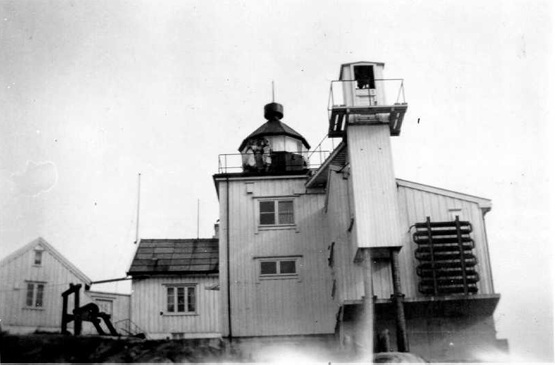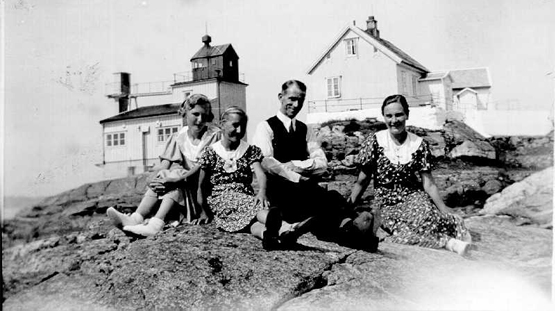The gallery is a young entity but Ryvarden’s history is old. Ryvarden has been a landmark for more than 1100 years. It was a significant place in historic times, and the story of the viking, Floka with the Ravens, and his voyage from Ryvarden to Iceland is told in Iceland’s Book of Sagas. The headland with the cairn from viking times became the site of a lighthouse.
The Norwegian Coastal Authority has automated the numerous lighthouses that previously were the work-place for many employees, thereby leaving the workers’ houses unoccupied.
So that these houses shouldn’t remain empty, they have been made available for new tenants.
The buildings at Ryvarden, on the southern boundary of Hordaland county, have in this way been taken over and converted, through the efforts of the municipality and others, to Ryvarden Gallery and “A Cultural Beacon”. The Coastal Authority and Sveio Municipal Council signed an agreement in 1992 for renting the houses for use by the local community. Since then Sveio has been responsible for running the gallery and developing Ryvarden for cultural and social purposes.

Historical background
Late in the iron-age there was a settlement at the head of Vikse fiord, home of the viking Floka Vilgerdsson, later called Floka with the Ravens. In 869AD he decided to sail westward, and while he waited for the right wind, he sacrificed to the gods and built a large cairn high on the headland here. He also cast a spell on three ravens that he took on his journey, and the story of their flying ahead so that he found land is well known in Iceland. The cairn became known as Floka-cairn, and is the earliest landmark for sailors we hear of. Later the name was changed to Ryvarden, “the Ry cairn”, probably because it marked the boundary of the Ryg clans’ territory (with the Hord-clans north of here).
After a rough time at sea Floka with the Ravens went ashore at Bardastrand in Gardaholm, as Iceland was then called. He turned out the animals he’d brought on the lush grass; he caught fish, whales, seals and birds in all the inlets and on the small islands. He was so content hunting that he forgot to harvest feed for the animals for winter, so when there was none left he had to slaughter the animals. The winter was extreme, the fiords were frozen over and the men were so discouraged that Floka re-named the country, Iceland.




 This brand is awarded a high quality product that has the basis of the Norwegian cultural heritage. The quality tag is awarded after a strict assessment. The assessment emphasizes the product’s cultural historical value, as it is a sign, and the product has been made available.
This brand is awarded a high quality product that has the basis of the Norwegian cultural heritage. The quality tag is awarded after a strict assessment. The assessment emphasizes the product’s cultural historical value, as it is a sign, and the product has been made available.
